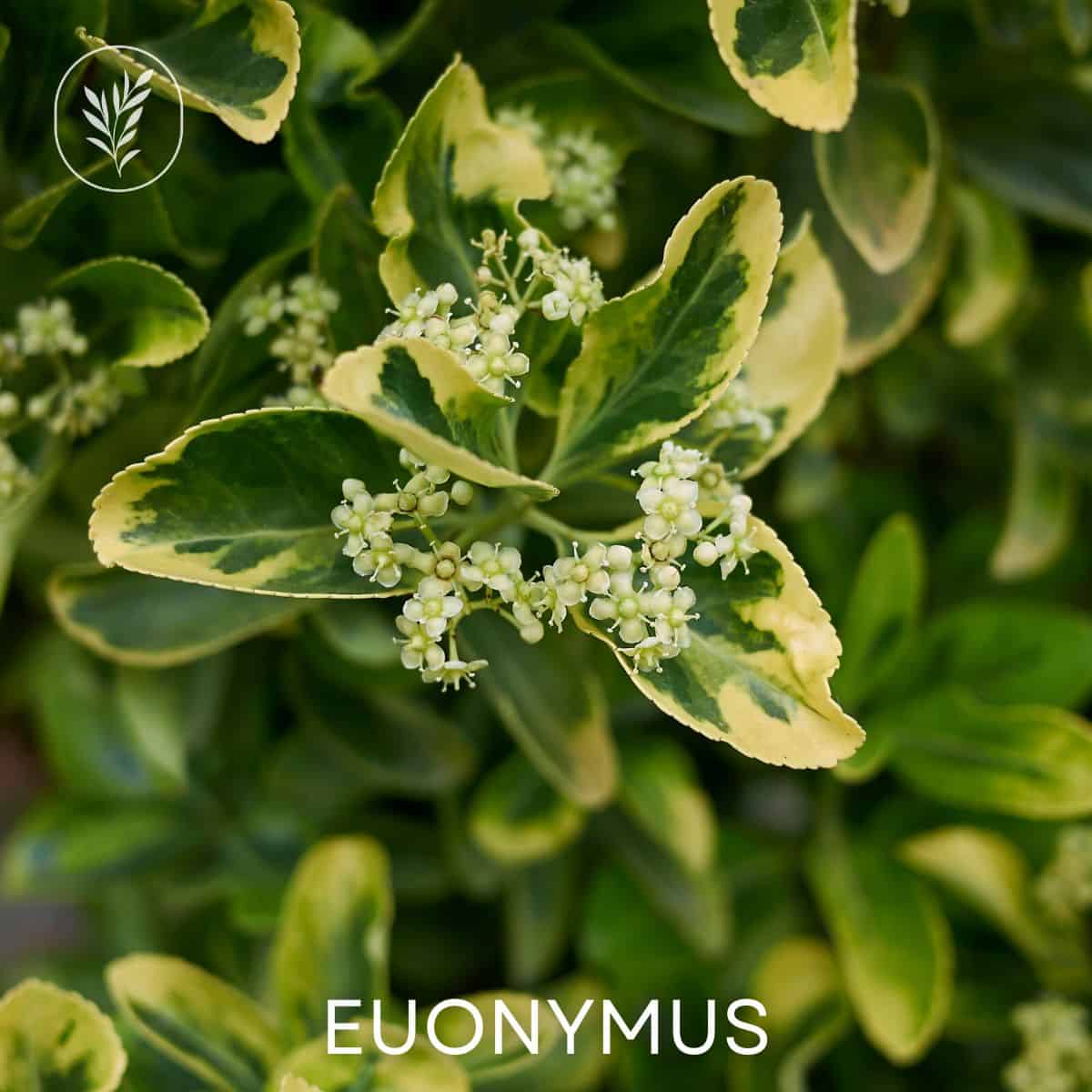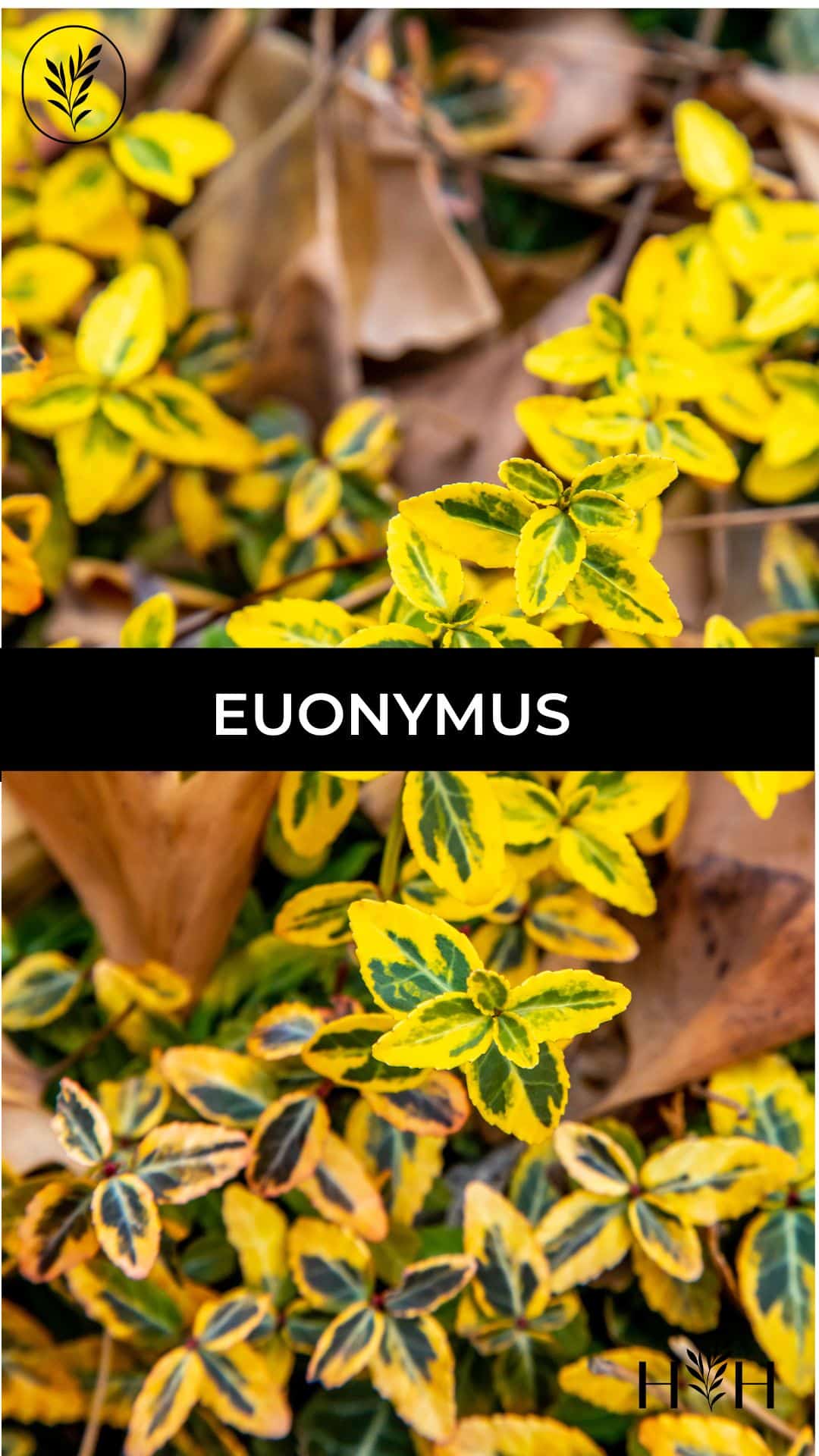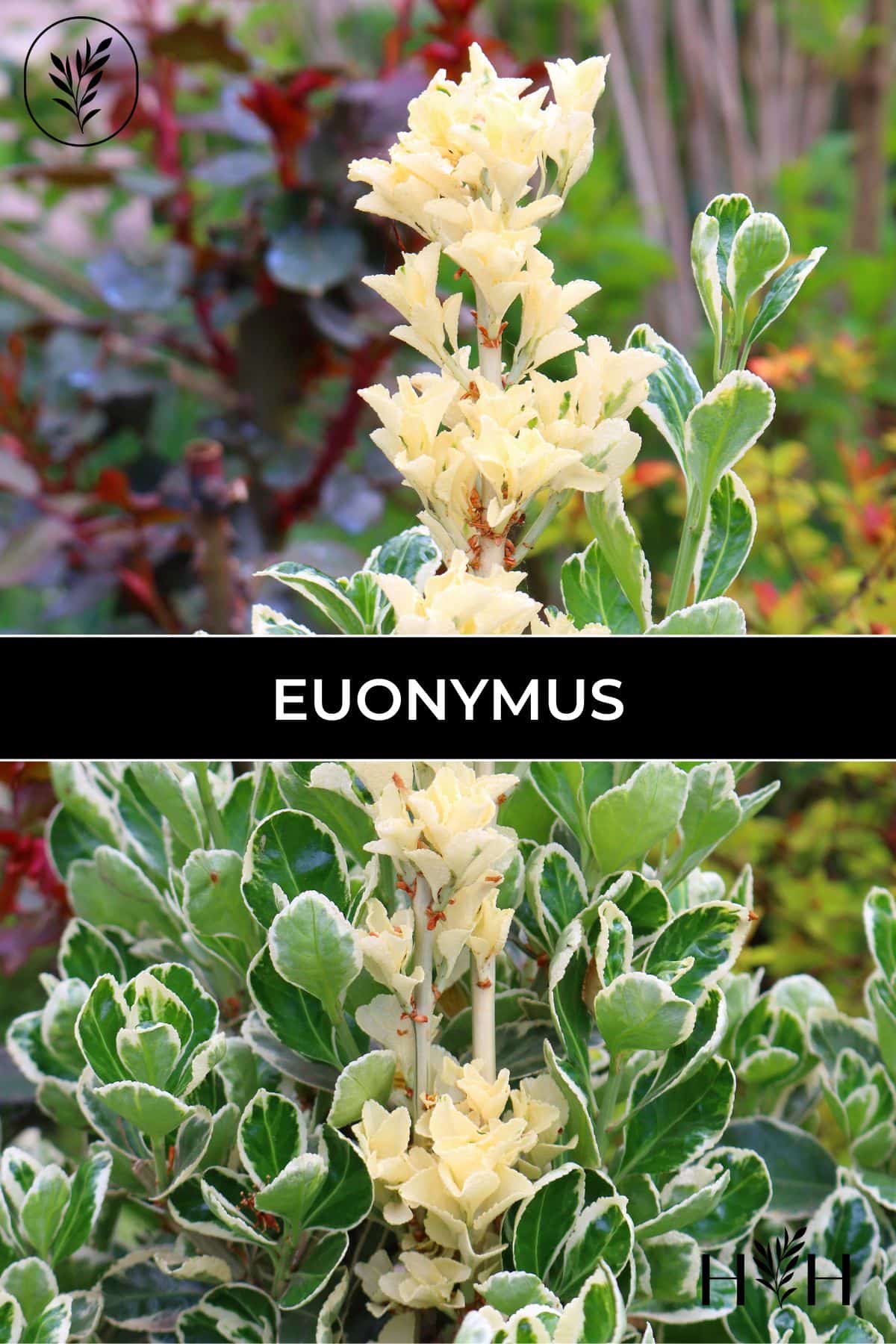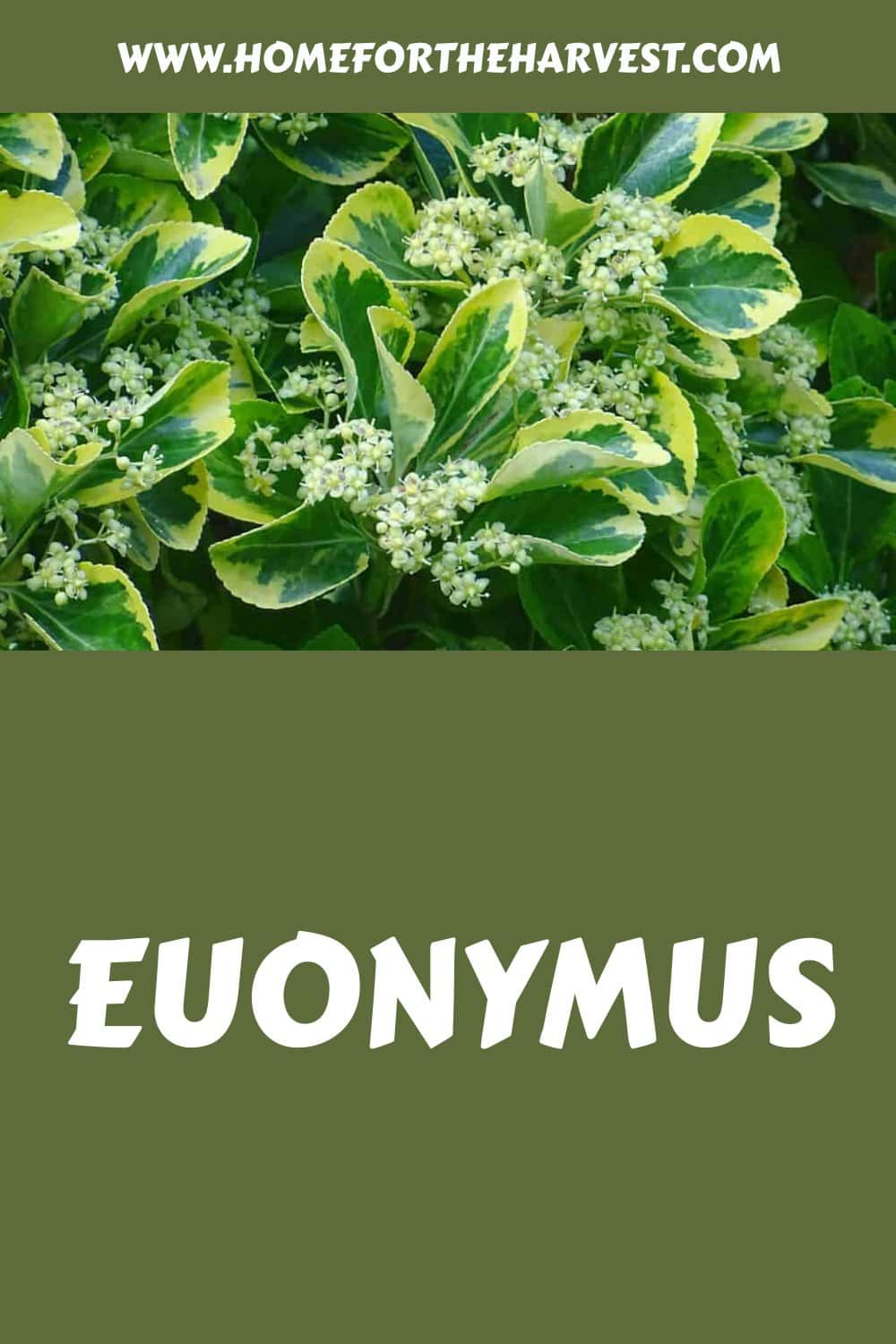Euonymus is a beautiful choice for an ornamental plant to add some depth and interest to your landscape.
Euonymus is a group of flowering ornamental plants, most of which take the form of medium-sized shrubs or woody vines. Many are broadleaf evergreens, and are known for their low-maintenance, easy-to-grow characteristics. The most popular types of Euonymus for landscaping are Euonymus fortunei (commonly known as wintercreeper) and Euonymus japonicus (Japanese spindle).
With so many types of Euonymus plants available, choosing the right ones for your garden can be difficult. Read on to learn all about the different kinds of Euonymus plants and how to plant and care for them!
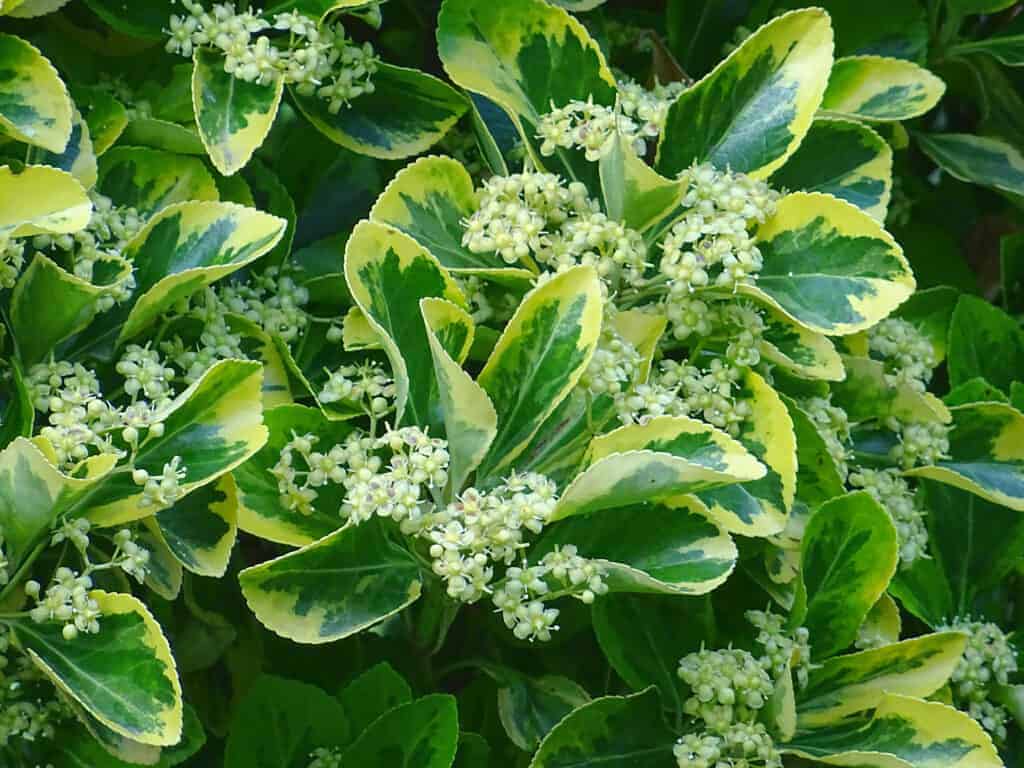
Types of Euonymus plants
Euonymus is a genus of woody flowering plants within the family Celastraceae. There are well over 100 different species of Euonymus, as well as numerous named cultivars. The Euonymus genus includes not only the plants typically referred to as “Euonymus” (mainly Euonymus fortunei, see photo above), but also other plants such as the common burning bush.
Most types of Euonymus plants are native to Asia. Each of these plants is a woody, flowering plant. The most popular Euonymus species for landscaping are Euonymus fortunei and Euonymus japonicus. Cultivars of Euonymus fortunei and Euonymus japonicus are often referred to simply as “Euonymus” in North America.
Here are some popular types of Euonymus Plants:
- Gold Splash Euonymus (Gold Splash wintercreeper) – Euonymus fortunei
- Moonshadow Euonymus – Euonymus fortunei ‘Moonshadow’
- White Album Euonymus (White Album Wintercreeper) – Euonymus fortunei
- Emerald n Gold Euonymus – Euonymus fortunei ‘Emerald n Gold’ (RHS Award of Merit, 1993)
- Emerald Gaiety Euonymus (Emerald Gaiety Wintercreeper) – Euonymus fortunei (RHS Award of Merit, 1993)
- Blondy Euonymus (Blondy Wintercreeper) – Euonymus fortunei
- Purple Wintercreeper – Euonymus fortunei ‘Coloratus’
- Manhattan Euonymus – Euonymus kiautschovicus ‘Manhattan’
- Silver King Euonymus – Euonymus japonicus ‘Silver King’
- Chollipo Euonymus – Euonymus japonicus ‘Chollipo’ (RHS Award of Merit, 2002)
The types of Euonymus above are popular landscaping shrubs for low-maintenance curb appeal. Gardeners and landscapers favor Euonymus plants for their hardy nature and evergreen leaves. Euonymus leaves have a leathery feel to them. Leaf patterns on Euonymus plants vary throughout the genus, but each plant is stunning.

Characteristics
Euonymus plants grow all around the world in different shapes, sizes, and colors. Most of the Euonymus shrubs around the world once originated in Asia. However, because of their resilient nature, they have thrived worldwide.
Euonymus plants can be evergreen and deciduous. While some euonymus plants grow to be about two or three feet tall, others can reach heights as high as 70 feet!
In an open area, the wintercreeper will grow no taller than two feet tall, however, it will spread across the open ground. Plant winter creeper next to a support system (such as a trellis or a brick wall), and it can grow to be about 70 feet tall!
The plant will continue “creeping” during its juvenile years. Once the plant fully matures, it will stop climbing walls and spreading across the ground. After the plant blooms in April, trim it to the preferred size.
How to plant euonymus
Euonymus is a tolerant genus of plants. These plants can grow in almost any condition. Not particular to soil type, moisture levels, or sun exposure, Euonymus plants are perfect for gardeners worldwide. The only circumstance that Euonymus plants do not do well in is water-logged soil. A Euonymus plant will grow better in drought conditions than it will in waterlogged areas.
As you get ready to plant your Euonymus plant, you should consider where it will look and grow best in the garden. Most Euonymus bushes and trees have thick foliage that provides great privacy. For these reasons, many use Euonymus bushes as border plants, screens, ground covering, privacy hedges, and noise-canceling hedges. Planted around the edge of your yard, these plants can grow tall enough to shield your home from the view of the outside world.
Dig a wide, shallow planting hole for the Euonymus. The planting hole should be at least twice as wide as the width of the plant pot or soil root ball, but the hole should be no deeper than the soil in the plant pot/root ball. Place the root ball into the hole and backfill it with the soil that was removed during the digging. Water the Euonymus deeply to hydrate the roots and help the soil settle. Top up the soil if required. Mulch the top of the soil with about 1″ of organic mulch such as homemade compost. Continue to water the shrub regularly for the first year or two after planting to ensure the roots become well-established in the surrounding soil.
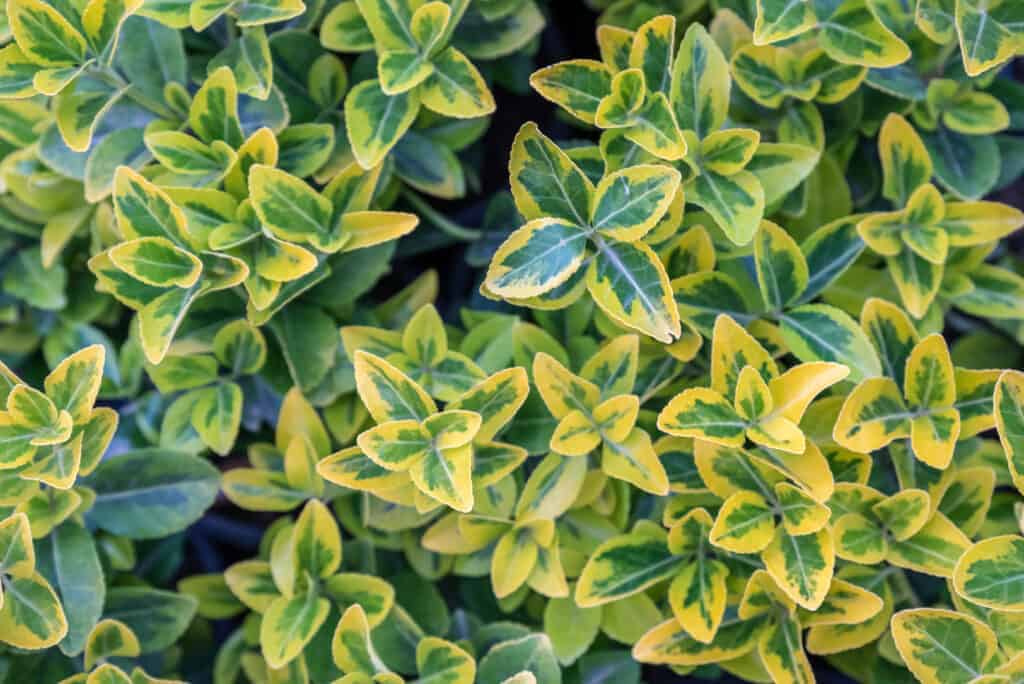
Caring for euonymus
Euonymus plants are hardy plants. Although they are resilient plants, they do still require some extra care and attention. For the first year of your Euonymus plant’s life, it will require the most attention. This extra care and attention will help the young plant establish a stable root system.
Water the Euonymus plants twice a week or whenever the top three inches of the soil is dry. In early spring, use a balanced fertilizer on your Euonymus. Be sure to use less than the prescribed amount on the bottle. Place the fertilizer about two inches from the trunk of the plant. Because the plant is young, too much fertilizer directly onto the plant could burn its roots. Repeat the fertilization process in mid-autumn if the plant looks weak.
You may notice your Euonymus plant growing and expanding rapidly in the first year. No need to fear—Euonymus plants can survive significant pruning and trimming. After the plant has flowered for the year, prune it. Whether you want the Euonymus plant to take on a specific shape or size, it will be able to withstand the pruning. Be sure to clean the shears after each cut.
Be sure to water the plant well in the fall. This extra water will prepare the plant for the cold winter, where water may be scarce. If the Euonymus does not have enough water, it could undergo a process known as desiccation and die.
Although Euonymus are extremely tolerant plants, it may be wise to take some extra precautions during the winter months. Wrap or cover your Euonymus plants with burlap to prevent them from showing signs of winter damage.
After the first year, your Euonymus plant will require much less care and attention. Rather than watering twice a week, you now only need to water the plant once a week. Additionally, the plant will not need fertilization to survive; however, if you notice your plant lacking nutrients or want it to grow bigger, fertilize it in early spring. Follow the same steps as described above.
Once again, if your plant lacks nutrients and life, you can fertilize it in mid-autumn. This extra boost will prepare it for harsher winter climates.
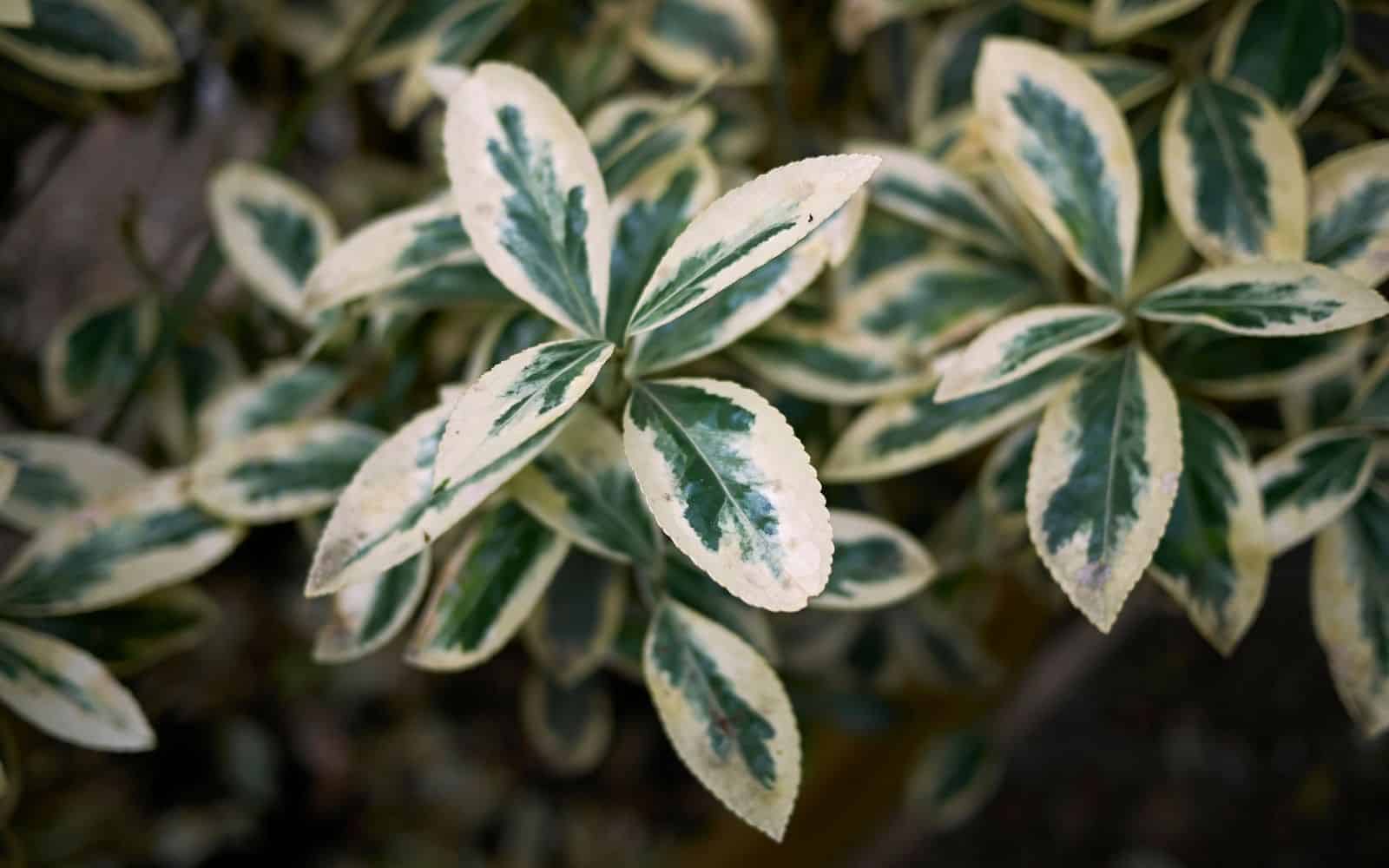
Pruning your Euonymus plant is a necessary aspect of growing this plant. Frequent pruning of Euonymus plants prevents them from growing wild and occupying more space than desired.
Parts of the United States classify Euonymus plants as invasive species. Because Euonymus plants proliferate and are tolerant to most environments, they have begun to crowd out other plant species in the United States. Be mindful when growing Euonymus plants to keep them under control. They should not be allowed to grow in surrounding forests or neighbors’ yards. As a gardener, it is your job to not only care for your plot of land but to care for the environment around you as well.
Euonymus plants can be poisonous to both humans and animals. This characteristic makes them especially dangerous in areas where pets and children are allowed to play. Do not let children or dogs play in or eat any part of the Euonymus plants. You may consider building a safety fence around your Euonymus plants or opting for a different type of plant.
Euonymus plants are an excellent choice for gardeners without time or resources to invest in their gardens. The plant will be resilient to most circumstances and provide the land with bright colors and added privacy throughout the year.
Propagating euonymus plants
For a new Euonymus bush, propagate one from an already established plant. If you already have Euonymus plants growing in your garden but want more plants, or if you know someone else with Euonymus plants, all you need is trimming from the original plant.
Sterilize a pair of trimming shears and locate a piece of stem about four to six inches long. This piece of the trunk should have about four pairs of leaves growing on it.
Prune the bottom two leaves and place the stem trimming in a pot with moist potting soil. After some time, roots will begin to grow from where you removed the leaves.
Once the trimmings’ roots reach about an inch long, transplant them to a larger pot. After some time in this planter, harden the plant before transplanting it into the garden.
When a plant is grown inside, conditions remain stable. Were the plant immediately transplanted outside, the unstable conditions would shock the plant and likely kill it.
To prevent this from happening, gardeners harden their plants. The process of hardening slowly exposes the plants to unstable conditions, better preparing them for growth outdoors. The process of hardening should start a week or so before the final frost date. Waiting until the frost has passed will ensure that the plants avoid exposure to colder temperatures.
The first step in hardening your Euonymus plant is identifying the proper location. This area should be safe from birds, bugs, or rodents who may knock the plants over or cause other damage. Additionally, this area should be mostly shaded and protected from the wind.
If you do not have an area protected from the wind, you can place the cuttings in a bin or a bucket that will act as a windbreak.
Start by placing the Euonymus stars in this area for a few hours of the day. Each day, extend the amount of time you leave the cuttings there. Increase the time by two to three hours each day. Be sure to water the cuttings before putting them in the hardening area each day. As the cuttings have increased exposure to warmer temperatures and wind, they will dry out faster. Keeping them moist will be extremely important.
After a week of this process, the cuttings can be left in the hardening area overnight. However, if there is any risk of frost, the plants should not remain in the hardening area overnight.
As well as increasing the amount of time the cuttings spend in the hardening area, you should gradually adjust the amount of sunshine they receive. Placing the cuttings in direct sunlight would dry them up. As the plants grow stronger, expose them to more and more sunlight.
Be patient when hardening your Euonymus plants; some cuttings may strengthen faster than others.


